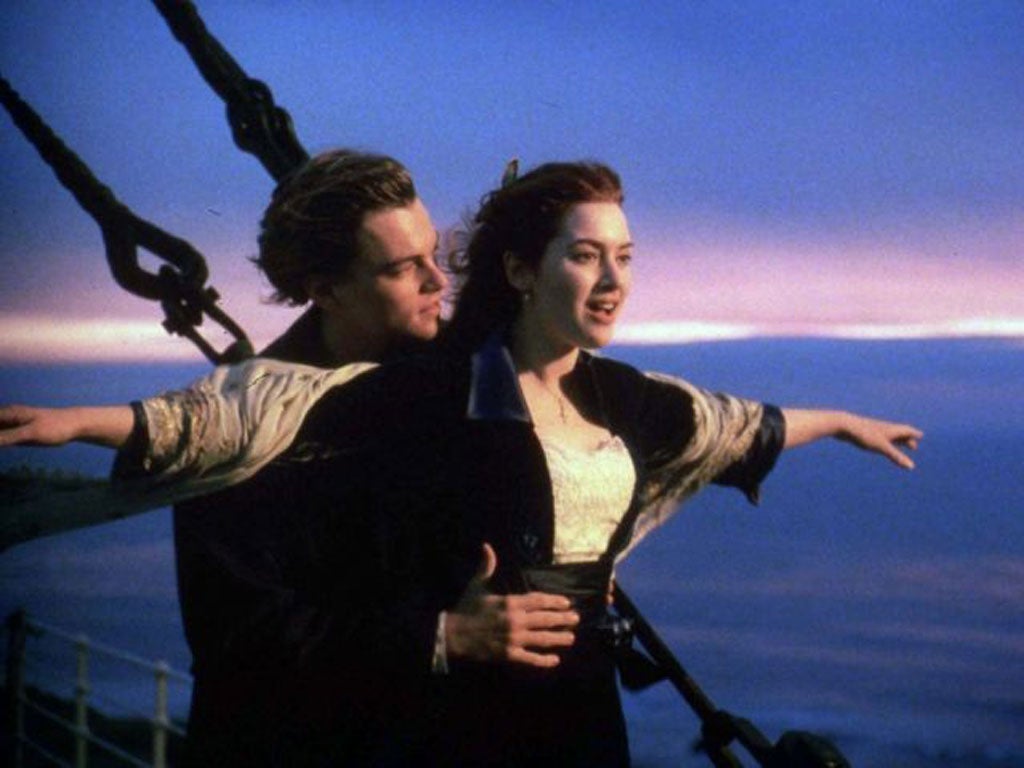Burma’s film-lovers celebrate a Titanic taste of freedom

The latest sign of the change taking place in Burma comes in the form of Kate Winslet and Leonardo DiCaprio holding each other tight and looking love-struck on the bow of a famous but ill-fated ship.
For the first time in more than a generation, film lovers in the country were yesterday able to legally attend the release of a Hollywood hit, and hundreds queued up to see the 2012 3D re-release of James Cameron’s 1997 blockbuster Titanic.
Cinema has a long and vibrant history in Burma. But after the military seized power in 1962, films became either a vehicle for junta propaganda or else heavily censored comedies. At the same time, Hollywood distributors were either prohibited from distributing - or else chose not to distribute - their films.
But earlier this week, with most Western sanctions having been suspended after a purportedly civilian government last year came to power, 20th Century Fox International announced it had signed a deal with a local distributor, Mingalar Co, a Rangoon-based outfit which operates eight single-screen theatres and which reportedly accounts for 80 per cent of domestic cinema trade.
“[We are] proud to be a pioneer in entering emerging markets and working with local businesses to further develop these endeavours,” said the studio’s co-presidents, Tomas Jegeus and Paul Hanneman. “ We have noted with great interest the reforms taking place in Burma under President Thein Sein and look forward to visiting our newest territory when we travel to Asia later this year.”
It is not as if the people of Burma have until now been unable to keep track of the movies of Hollywood or elsewhere. Pirated and copied films are often shown in the country’s cinema halls or else sold in
DVDs. In 2008, people risked being thrown in prison to get their hands on a copy of Rambo 4, which featured Sylvester Stallone as an ageing Vietnam veteran rescuing Christian missionaries abducted by the authorities while supplying supplies to the ethnic Karen, who have long been the victims of attacks from government troops. Bollywood movies are also very popular.
Yesterday in Rangoon, crowds flocked a cinema in the Dagon Centre II shopping mall in the Myenikone neighbourhood to see the film. Among the customers was a 32-year construction worker, Ko Aung Bo, who had come with his girlfriend.
“I wanted to see this movie for long time. This is my first time in my life I have seen a 3D. Fortunately, it is The Titanic,” he said as he waited to enter. “I'm so excited to enter into the cinema hall - I can't wait to see it.”
Burma’s association with movies dates back to the beginning of the 20th Century. The director Ohn Maung is credited with producing both the country’s first documentary and its first feature movie, Myitta Nit Thuyar (Love and Liquor), a 1920 silent release focusing on gambling and alcohol. The first film with speech came in 1932 with the release of It Can’t Be Paid with Money.
But Burma’s movie-goers face problems other than censorship. Earlier this summer it was reported that a number of cinemas that constitute Rangoon’s Cinema Row, close to Bogyoke Aung San Market and some of them dating back to the 1920s, were at risk of being torn down as part of the city’s development. Indeed, a report last year in the Burmese news magazine Eleven suggested that the number of theatres still operating in the country had tumbled from 244 to just 71. Most are located in the two main cities of Rangoon and Mandalay.
Philip Jablon who writes the South East Asian Movie Theatre Project blog about cinemas in the region and who highlighted the threat to Cinema Row, said the arrival of Hollywood films in Burma will have a considerable impact.
“The big budget spectacle of Hollywood films will definitely attract a following. As of now, the domestic fare would have a really hard time competing. The vast majority of Burmese productions are made quickly and on the cheap,’ he said. “If Hollywood enters the market and fills up all the best cinemas in the country, then Burmese films will likely be relegated to the lower 2nd class and smaller market cinemas.”
A report by Voice of America said as part of the deal, Mingalar Co is to spend more than £190,000 on new digital equipment that will allow better quality projection of movies.
Banned: Films the authorities feared
Rambo 4
Banned in Burma, where many risked their lives to see America's favourite monosyllabic veteran take on a bloodthirsty Burmese army and rescue a group of missionaries.
Battleship Potemkin
Described as "the most celebrated work of propaganda in the history of film", it tells the story of the 1905 mutiny on the Russian ship Prince Potemkin. On its release in 1925 it was banned in Britain, France and the US over fears it could inspire revolution.
Avatar
James Cameron's blockbuster is the highest-grossing film ever, despite the 2D version being banned in China, where authorities feared its depiction of the forcible eviction of the Na'vi people related too closely to the experience of many urban Chinese.
banned films the authorities feared
Subscribe to Independent Premium to bookmark this article
Want to bookmark your favourite articles and stories to read or reference later? Start your Independent Premium subscription today.

Join our commenting forum
Join thought-provoking conversations, follow other Independent readers and see their replies